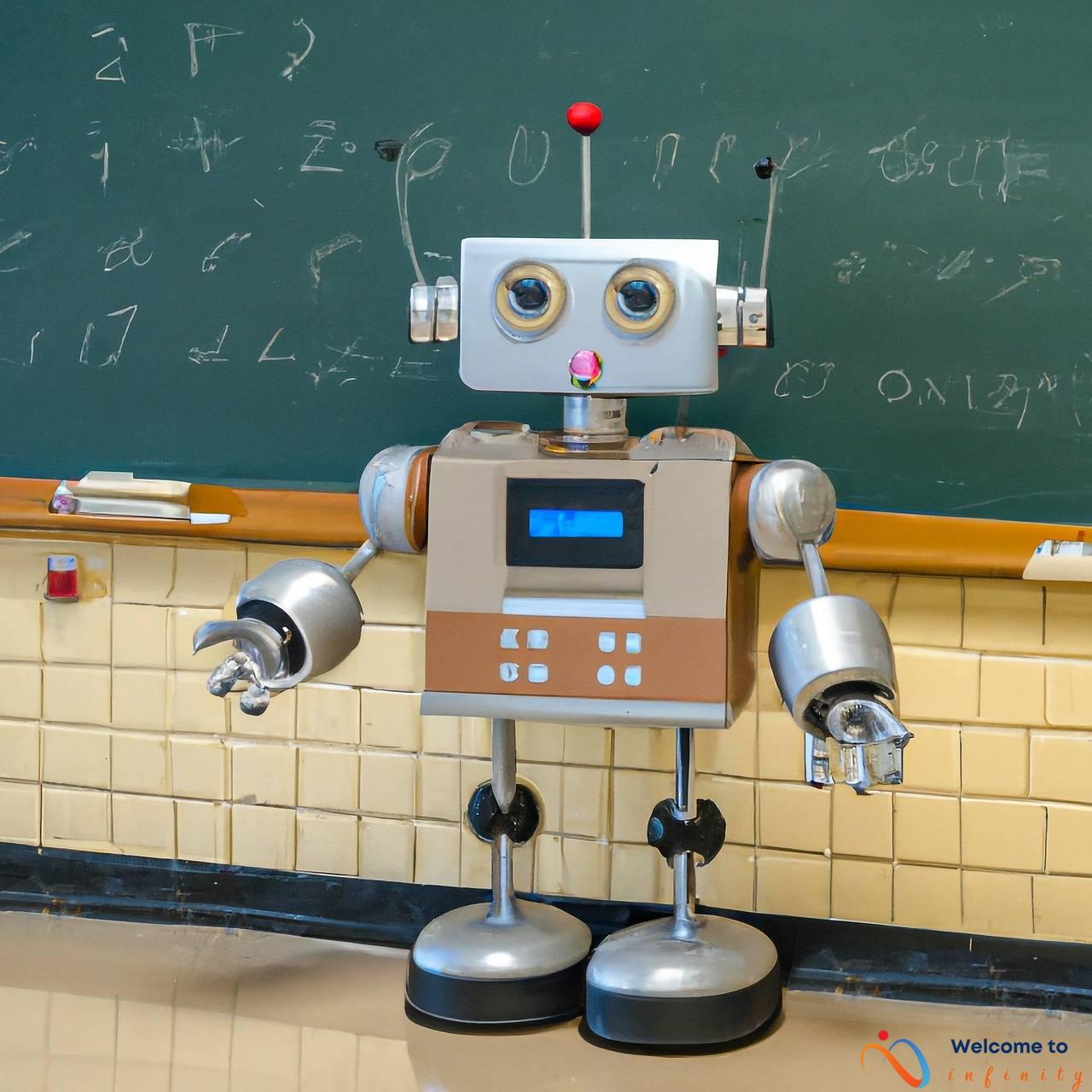Natural Language Processing (NLP) is a subfield of Artificial intelligence that focuses on how humans interact with computers and machines can comprehend and respond suitably to human language. It involves the use of computational and mathematical techniques to process, analyze, and understand extensive language data.
NLP has made it possible for computers to comprehend, interpret, and manipulate human language, resulting in a smarter and more efficient interaction between people and technology. The concepts of NLP have evolved over the years, leading to various innovative technologies that utilize artificial intelligence and machine learning algorithms.
This article provides an overview of NLP basics with its fundamental concepts and applications. We will explore text preprocessing, tokenization, stemming, part-of-speech tagging, and named entity recognition, all of which are essential elements of NLP. Furthermore, we will delve into NLP applications such as sentiment analysis, machine translation, chatbots, speech recognition, and text summarization to give you a better understanding of its diverse applications.
If you're curious about how NLP works, its applications, and major impacts, keep reading to discover more.
What is Natural Language Processing (NLP)?
Have you ever wondered how virtual assistants like Siri or Alexa are able to understand and respond to your commands? The answer lies in Natural Language Processing (NLP), a subfield of Artificial Intelligence (AI) that deals with the interaction between computers and humans in natural language.
NLP aims to make computers understand, interpret, and manipulate human language just like humans do. It involves several complex tasks, such as text preprocessing, tokenization, stemming, part-of-speech tagging, and named entity recognition.
With its focus on the study of human language, NLP has become an essential part of several industries, including healthcare, finance, marketing, and customer service. Companies are using NLP to analyze customer feedback, develop chatbots, automate customer service, and improve their marketing strategies.
NLP has also revolutionized the field of language translation by using machine learning algorithms, neural networks, and deep learning techniques to achieve higher accuracy and speed.
To summarize, NLP is a crucial field that allows computers to understand human language and interact with humans in a more human-like way. Its applications are vast and diverse, and it is rapidly changing the way we communicate with machines.
The Basic Concepts of NLP
The basic concepts of NLP play an important role in the development of NLP models. Here, we'll briefly discuss each concept, its purpose, and how it contributes to NLP.
Text preprocessing involves cleaning and formatting the unstructured text data to make it suitable for NLP applications. During this process, unnecessary characters and stopwords are removed, and the text is converted into lowercase to provide accurate analysis.
Tokenization is the process of breaking down the text into individual words or phrases, known as tokens. It is a crucial step for any NLP task and used to understand the structure of the text.
Stemming is the process of reducing words to their base or root form. It helps in enhancing the efficiency of text analysis by reducing multiple words with the same root to a common feature. However, stemming may cause some loss of meaning if not used carefully.
Part-of-speech tagging is a technique for identifying the grammatical categories of words in a given text. This technique is used for tasks like language modeling, parsing, and machine translation that depend on understanding the grammatical structure beyond individual words.
Named Entity Recognition (NER) is the process of identifying and classifying named entities like names, locations, organizations, dates, and monetary values in a text corpus. It is used in various tasks like information extraction, question-answering systems, and machine translation.
These fundamental concepts of NLP are used in various NLP models. For example, NER models use tokenization to identify words, and POS tagging helps to classify the word's grammatical categories. In summary, these concepts help to build NLP models that can interpret, manipulate, and process human language.
Text Preprocessing
Text preprocessing is a crucial step in NLP that involves cleaning and formatting raw text data to make it ready for analysis. Unstructured data includes information that is not organized and lacks a defined structure. Preprocessing resolves the challenges posed by such data by converting it into meaningful information that can be analyzed.
Some of the essential techniques involved in text preprocessing process are:
- Removing unnecessary characters and symbols such as punctuations, numbers, and special characters.
- Removing stopwords that do not add any value to the analysis such as “the,” “a,” “and.”
- Converting the text into lowercase to unify the same words written in different cases and eliminate any confusion that may arise in the analysis.
As a result of these techniques, data is now transformed into structured and meaningful information that can be analyzed and used to provide valuable insights such as sentiment analysis, topic modeling, and more.
Tokenization
Tokenization is a fundamental technique used in NLP to break down a piece of text into smaller units, known as tokens. Tokens can be individual words, phrases, or even sentences. Tokenization is the first step in most NLP applications since it transforms a piece of unstructured text into a structured form that can be further analyzed.
There are several approaches to tokenization, one common approach is to use whitespace and punctuation as delimiters and split the text accordingly. Another approach is to use machine learning algorithms like maximum entropy and conditional random field to predict the best way to split the text based on a predefined set of rules. However, the choice of tokenization technique depends on the specific NLP task and the characteristics of the text corpus.
Tokenization helps in many NLP applications such as text classification, named-entity recognition, and sentiment analysis, where individual words or phrases need to be analyzed separately. For example, in sentiment analysis, tokenization is used to break down a sentence into individual words, which are then assigned a sentiment score to determine the overall sentiment of the sentence.
Tokenization can also be tricky, especially when dealing with languages that have complex structures like Chinese or Japanese. For example, in Japanese, words are not separated by spaces, and therefore tokenization requires additional language-specific algorithms to identify word boundaries. Similarly, in Chinese, tokenization requires segmentation of characters since there is no clear separation between words.
Overall, tokenization is a vital technique in NLP to extract meaningful information from text data. It can be performed using different techniques, and the choice of technique depends on the specific NLP task and the text corpus characteristics.
Stemming
Stemming is a vital component of Natural Language Processing (NLP), which facilitates the efficient analysis of text. The main goal of stemming is to reduce the words to their base or root form while preserving the meaning behind it. Since several variations of words exist due to their derivations (prefixes and suffixes), it is necessary to remove them to aid in text analysis. The primary advantage of stemming is its ability to merge inflectional forms of words to their root form, which makes it easier to identify patterns in data.
However, stemming can often result in truncation of meaning as removing suffixes and prefixes can sometimes alter the original meaning of the word. For example, ‘playing' will be stemmed to ‘play,' and ‘walked' will be stemmed to ‘walk.' While minimal, it can still have a slight impact on the overall analysis done. Thus, an alternative to stemming is lemmatization, which attempts to reduce the word to its dictionary base form.
Here's an example of how stemming works:
| Original Word | Stemmed Word |
|---|---|
| laughing | laugh |
| played | play |
| walking | walk |
Overall, stemming plays a critical role in NLP, combines words with similar meanings, and simplifies the analysis process by reducing the number of unique words in a text corpus.
Part-of-Speech Tagging
Part-of-speech tagging is a significant task in the NLP field, where each word present in a sentence is assigned a part of speech like noun, verb, adjective, preposition, etc. Part-of-speech tagging is often used in applications like language translation, text-to-speech conversion, and sentiment analysis. To perform part-of-speech tagging, statistical models and deep learning algorithms can be used, which rely on either supervised or unsupervised learning techniques.
The supervised approach involves training the machine learning models using labeled data, where each word is already tagged with its corresponding part of speech. Whereas in unsupervised learning, the clustering technique is used for grouping the words with similar behavior. For instance, k-means clustering is one such unsupervised learning technique, which can cluster similar words based on their part-of-speech behavior.
Part-of-speech tagging is not a straightforward task as one word can carry multiple meanings based on its part-of-speech context. For example, the word ‘run' can be used as a verb or a noun depending on the context of the sentence. However, with the advancement in NLP techniques and the availability of large annotated datasets, the accuracy of part-of-speech tagging has improved significantly.
Part-of-speech tagging plays a crucial role in various NLP applications like named entity recognition, text summarization, sentiment analysis, and machine translation. Accurate tagging of each word in a sentence can significantly improve the results of these tasks, making them more precise and relevant.
Named Entity Recognition (NER)
Named Entity Recognition (NER)
Named Entity Recognition (NER) is a vital step in natural language processing that involves identifying and categorizing named entities in text data. NER helps to extract structured information from unstructured text data and is essential for many NLP applications, including information retrieval, automatic document classification, machine translation, and question answering.
The primary purpose of NER is to recognize and classify named entities, such as people, organizations, locations, dates, and monetary values, within a given text corpus. In addition to identifying named entities, NER also involves detecting their relationships with other entities present in the text.
NER systems use advanced machine learning algorithms such as decision trees, maximum entropy models, and hidden Markov models to identify patterns in text data and classify named entities. The accuracy of the NER system depends on the quality of the annotated training data, the selection of features, and the algorithm used.
NER is widely used in various industries, including digital marketing, healthcare, finance, and law enforcement. For example, in digital marketing, NER can be used to identify mentions of a brand or product on social media platforms and analyze customer sentiments. Similarly, in healthcare, NER can help extract information from electronic health records and identify adverse drug interactions. In law enforcement, NER can be used to extract structured data from police reports and identify relationships between people and organizations involved in criminal activities.
Applications of NLP
NLP has revolutionized how we interact with machines and has numerous applications in various fields. Some of the most notable applications of NLP are:
- Sentiment Analysis: Sentiment analysis uses NLP techniques to analyze text data and determine the overall sentiment of a piece of text, whether it is positive, negative, or neutral. This is widely used in social media monitoring, customer feedback analysis, and brand reputation management.
- Machine Translation: Machine translation is the task of translating text from one language to another using NLP techniques. It is a challenging task that involves understanding the original text and accurately conveying its meaning in the target language. Popular machine translation tools like Google Translate and Microsoft Translator are based on NLP models.
- Text Summarization: Text summarization is the process of creating a short and concise summary of a large text corpus. NLP techniques like topic modeling, clustering, and graph-based algorithms can be used to summarize the main themes and concepts of a long text. This is useful in fields like journalism, legal, and academic research where summarizing large volumes of text is necessary.
- Chatbots: Chatbots are computer programs that can interact with humans in natural language. NLP techniques are used to interpret the user's input and provide relevant responses. Chatbots are being increasingly used in customer service, e-commerce, and technical support.
- Speech Recognition: Speech recognition is the process of converting spoken language into text. NLP techniques like acoustic modeling, language modeling, and hidden Markov models are used to convert speech into text. Speech recognition is widely used in personal assistants like Siri and Alexa, dictation software, and in-car navigation systems.
These are just a few examples of the applications of NLP. With the advancement of technology and research in this field, we can expect to see more innovative uses of NLP in the future.
Sentiment Analysis
Sentiment analysis, also known as opinion mining, is a widely used application of NLP that involves using machine learning algorithms to extract emotions and attitudes from text data. It is used to classify whether a piece of text expresses a positive, negative or neutral sentiment towards a particular subject. Sentiment analysis has various applications, including brand monitoring, customer feedback analysis, and social media analysis.
NLP techniques used in sentiment analysis include tokenization, stemming, part-of-speech tagging and machine learning algorithms. The process involves taking the input text and breaking it down into individual words, understanding their context, and then assigning a sentiment score to each word based on its polarity and intensity. The scores are then aggregated to determine the overall sentiment of the input text.
Sentiment analysis has proven to be an effective tool for businesses to monitor customer satisfaction and improve their products or services accordingly. It is also useful for political analysis, stock market prediction, and predicting consumer behavior.
A successful implementation of sentiment analysis requires high-quality training data, accurate algorithms, and careful consideration of contextual factors. Despite its challenges, sentiment analysis has the potential to revolutionize the way businesses and organizations collect and analyze customer feedback, and improve their decision making processes.
Machine Translation
Machine translation is an essential application of NLP techniques that enables the translation of text from one language to another. It involves the use of algorithms and statistical models to analyze and understand the original text and create an accurate and meaningful translation in the target language. Machine translation is a challenging task, especially when dealing with idiomatic expressions, slang, or technical jargon that can be difficult to translate accurately.
There are two main approaches to machine translation: rule-based and statistical machine translation. Rule-based machine translation uses a set of predefined rules and linguistics models to analyze and translate the text. On the other hand, statistical machine translation relies on analyzing large amounts of parallel corpora in both the source and target languages to develop a translation model.
Recent advances in deep learning have led to the development of neural machine translation, which uses deep neural networks to learn the translation model from the data. This has significantly improved the accuracy and fluency of machine translation systems, making them more useful for various applications like e-commerce, communication, business, and travel.
Despite the significant progress in machine translation technology, there are still challenges that need to be addressed. One of the major issues is the lack of high-quality parallel corpora in many languages, which limits the performance of machine translation systems. Additionally, cultural and linguistic differences can also pose challenges for machine translation, making it difficult to capture the nuances and tone of the original language.
In conclusion, machine translation is a crucial application of NLP that enables the translation of text from one language to another. While it has made significant progress in recent years, there is still a long way to go to achieve human-level translation accuracy. However, with the ongoing development of new models and techniques, machine translation is expected to become even more sophisticated and accurate in the future.
Text Summarization
Text Summarization:
Text summarization is a vital task in the field of Natural Language Processing (NLP), where the goal is to reduce the length of a document while retaining its main ideas. This is especially useful when dealing with large volumes of text, as it helps to save time and resources by quickly identifying the key information. Summarization can be done in two ways: extractive and abstractive.
Extractive summarization involves selecting and extracting the most important sentences or passages from a document and stitching them together to create a summary. The selection is done based on some predefined rules, such as the frequency of occurrence of important keywords or their position in the document. This method is relatively easy to implement, but it has limitations, as it may not capture the context and coherence of the original document.
Abstractive summarization, on the other hand, involves generating a summary by rearranging and rephrasing the information in the document. This method is more challenging to implement, but it produces summaries that are closer to human-written ones and have better coherence and fluency.
NLP techniques like topic modeling, clustering, and graph-based algorithms can be used for text summarization. Topic modeling involves identifying the main topics and subtopics that exist in the document by analyzing the frequency and co-occurrence of the words. Clustering is the process of grouping the sentences that are semantically related, and graph-based algorithms involve building a graph representation of the document and extracting the most important nodes and edges.
Automatic text summarization has a wide range of applications, including news article summarization, scientific article summarization, and document summarization. It helps in quickly identifying the core ideas from the text, which in turn helps in making informed decisions, and saves lots of time and resources.
Chatbots
Chatbots have revolutionized the way businesses interact with their customers. They are computer programs that mimic human conversation, providing assistance to customers in real-time. Chatbots use NLP techniques to understand the user's input and provide relevant responses. They are widely used in customer service, e-commerce, and banking industries.
One of the main benefits of chatbots is their ability to handle large volumes of queries simultaneously, without any wait time. They provide 24/7 support and can handle basic queries and tasks like booking appointments, answering FAQs, and guiding users through a website or mobile app.
Chatbots are built using artificial intelligence and machine learning algorithms. They can learn and improve their responses with each interaction, and provide personalized solutions to customers. Chatbots can be integrated with various messaging platforms like Facebook Messenger, WhatsApp, and website chat windows.
NLP techniques enable chatbots to understand the intent behind the user's input, and provide relevant responses. These techniques include named entity recognition, sentiment analysis, and context-based language modeling. Chatbots can be trained on specific domains and topics to provide accurate and relevant responses to users.
With the rise of voice assistants like Siri and Alexa, chatbots are becoming more advanced and sophisticated. They can understand and process spoken language, making them ideal for hands-free interactions. Chatbots are transforming the way businesses engage with their customers, providing a personalized and seamless experience.
Speech Recognition
Speech recognition is a technique that allows computers to understand human speech and convert it into text. This technology has various applications, including creating voice-controlled devices and helping people with disabilities to access technology.
Speech recognition is achieved by using NLP techniques like acoustic modeling, language modeling, and hidden Markov models. Acoustic modeling involves the analysis of speech signals by dividing them into small segments, known as frames. These frames are then matched with phonemes, which are the smallest units of sound that make up a language. Language modeling involves analyzing a large corpus of text to estimate the probability of a word appearing in a given context. Hidden Markov models are statistical models that are used to recognize words or phrases in speech signals.
The accuracy of speech recognition systems has improved significantly in recent years, thanks to the advancements in deep learning and neural networks. However, these systems still face challenges in recognizing different accents, dialects, and speech patterns. Researchers are working on developing more sophisticated algorithms that can adapt to different speaking styles and contexts to improve the accuracy of speech recognition systems.
Speech recognition is used in various industries, including healthcare, finance, and telecommunications. It has numerous applications, including creating voice-controlled assistants like Siri and Alexa, transcribing spoken text in real-time for live captioning and subtitling, and improving accessibility for the visually impaired or people with mobility impairments.











